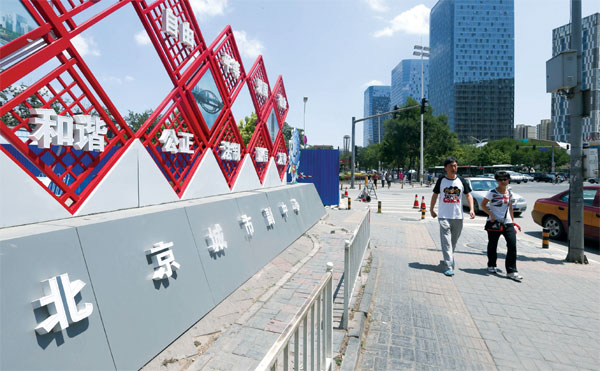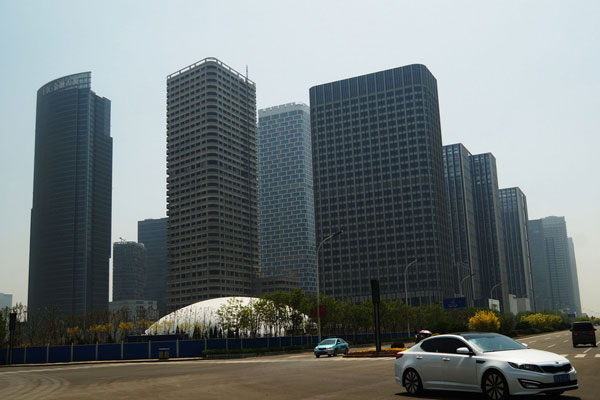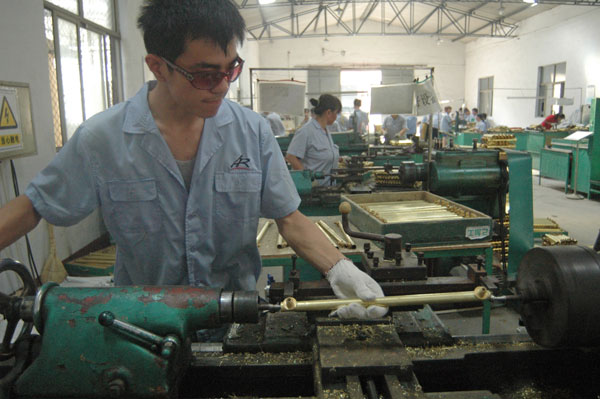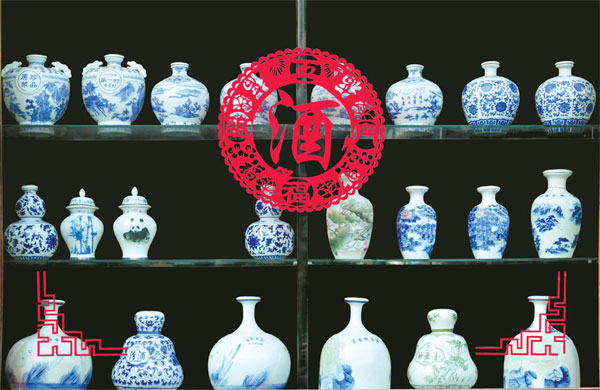Road map points the way forward for proposed industrial cluster
Updated: 2015-08-07 09:26
By Zheng Jinran(China Daily Europe)
|
|||||||||||
 |
|
Pedestrians walk past a sign in Tongzhou that reads, "Beijing Subsidiary Administrative Center". [Photo by Hei Ke/China Daily] |
Officials have ratified an action plan to weld three major population centers into a single economic entity to promote stronger growth and tackle 'urban diseases'
The formation of a fully integrated world-class manufacturing and business hub in North China has moved a step closer after the governments of the three main centers involved accepted an official road map for the union.
The proposed Beijing-Tianjin-Hebei province cluster, which will have Beijing as its administrative center, will cover about 217,000 square kilometers and contain more than 200 counties and more than 100 million people. Last year, the combined GDP of the three centers was 6.65 trillion yuan ($1.07 trillion).
Despite the move, Beijing will retain its role as China's capital and the national center for politics, culture, international exchanges and technical innovation.
At a recent conference to promote regional integration, Vice-Premier Zhang Gaoli said one of the priorities would be the smooth transfer of Beijing's non-capital functions to the outlying districts.
Zhang urged the three centers to implement the integration framework without delay, and called on them to provide detailed task lists and a timetable for full integration.
The authors of the road map combine and streamline the centers' own development plans to produce a unified strategy designed to optimize allocation of resources and promote stronger economic growth.
Moreover, when the 13th Five-Year Plan (2016-20) is implemented next year, Beijing, Tianjin and Hebei will follow a shared plan, instead of three separate approaches, the government says.
The three centers will play separate but interrelated, roles in boosting regional growth based on comprehensive analysis of their economies, current status, resources and other factors.
Relocation plans
According to the plan, a number of local government departments will relocate from downtown Beijing to the southeastern suburb of Tongzhou. Although the move will promote growth, some government employees are unhappy. One civil servant, who preferred not to be named, says she is considering quitting her job with the Beijing municipal government because the daily commute will be too time-consuming and stressful.
"It's too far to travel every day. Given the severe traffic congestion, the round trip would take three to four hours every day," says the 30-year-old who lives and works in southwestern Beijing. She adds that she plans to start a family next year, and complains that Tongzhou lacks good schools, hospitals and entertainment venues.
Huang Yan, deputy head of the Beijing Urban Planning Commission, says the relocations will be complex and will involve a great deal more than people simply selling their houses and moving to Tongzhou. She says the district would be transformed into an independent area, with a well-defined industrial structure and excellent entertainment and educational facilities.
Guo Jinlong, Party chief of Beijing, says the decision to promote the development of Tongzhou is an important step in the plan to move non-capital functions away from the center. He pledges that construction work would make "remarkable progress" by 2017.
Today's Top News
China rejects Philippine, Japanese, US claims on S. China Sea issue
MH370 passengers' families want more answers
'New Suez Canal' opened
for ship traffic
Trump won't rule out third-party run
China asks further probe into MH370
China's property taxes coming soon
Seven arrested for trafficking women into sex slavery in China
ROK's ex-first lady begins
DPRK visit
Hot Topics
Lunar probe , China growth forecasts, Emission rules get tougher, China seen through 'colored lens', International board,
Editor's Picks

|

|

|

|

|

|






